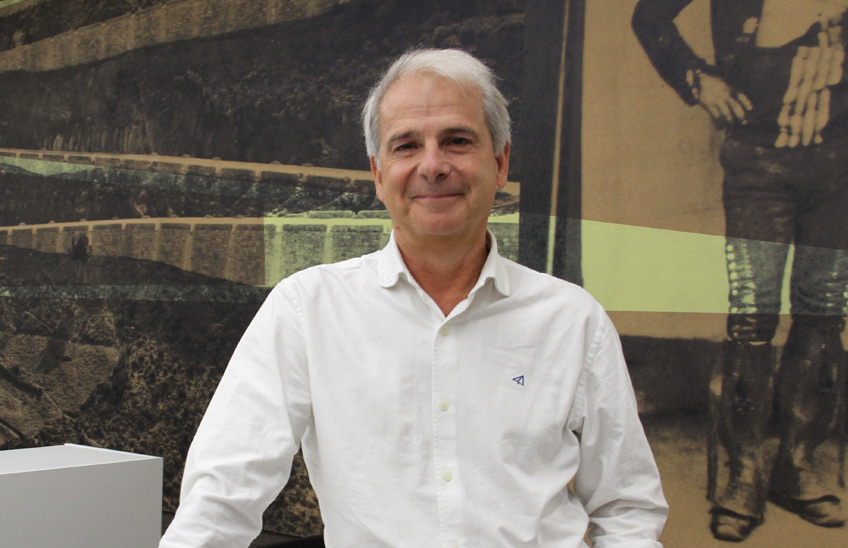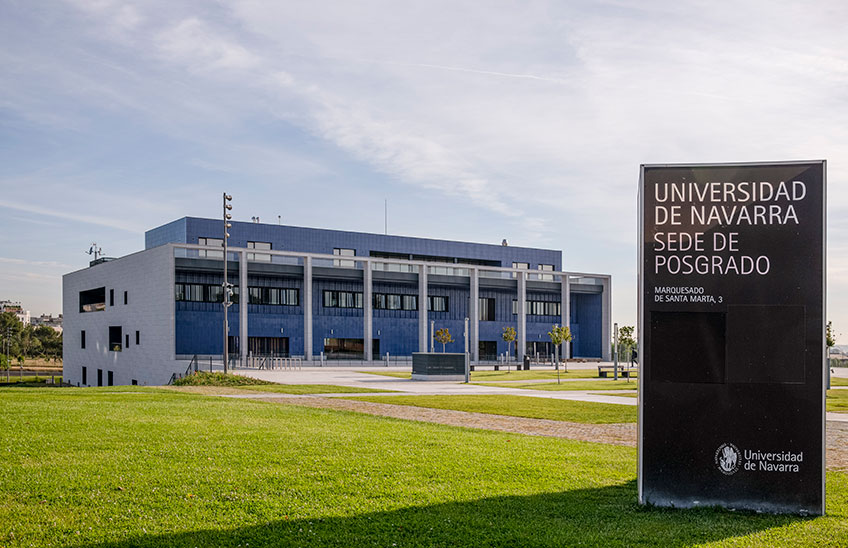Javier de Navascués: "The conquistadors were not officials of the Crown, but armed entrepreneurs".
The Full Professor of Spanish American Literature has given a seminar in the ICS graduate "From Hernán Cortés to Blas de Lezo: in search of an impossible hero for the Spanish Empire in America".

FotoManuel Castells<br>/Javier de Navascués, catedrático de Literatura Hispanoamericana de la Universidad de Navarra, en el ICS.
30 | 09 | 2024
Is it possible to identify a hero of the Spanish Empire in America? How have the historical characters that played the leading role in the conquest and the colonial era been represented throughout the centuries? Why are they idolized figures and, at the same time, rejected? On these and other questions Javier de Navascués, Full Professor of Spanish-American Literature of the School of Philosophy and Letters of the University of Navarra, has reflected in the seminar that he has given in the congress International "Uses of Spain: images of the Spanish in the political and religious debates of the contemporary world", celebrated in the Institute for Culture and Society (ICS) on September 26 and 27.
In meeting, graduate "From Hernán Cortés to Blas de Lezo: in search of an impossible hero for the Spanish Empire in America", Navascués has explored "the subjective representations" of these two historical figures, an analysis that, as the expert explains, could be applied to any heroic representation.
Hernán Cortés (1485-1547), conqueror of the Aztec Empire, is the archetype that serves as model for the analysis of other conquerors. The representation of his figure, mythologized and discredited, has followed a changing and little known path. As Navascués explains, when Cortés undertook the conquest of Mexico in the 16th century, he was looked upon with suspicion from Spain. It was his eagerness to promote staff that led him to publish letters about his achievements and to promote the writing of books that favored him. After his death, his descendants took over, promoting epic poems about his exploits.
"Paradoxically, there are two Cortés: one highly promoted in America and in the Indies, in general, and another that is looked upon with certain distrust in sectors of the crown from Spain in the 16th century. The construction of Cortés as a national hero began to take place in the 18th century and especially in the 19th century, when nationalism emerged," he points out.
And, to understand this duality, he points out an aspect core topic: "The conquest is made from private hands. It is not the monarchy who sends soldiers, but private individuals who make a contract with the Crown to carry it out. Cortés did not represent the Spanish nation at all". In this sense, he emphasizes that "the conquistadors were not royal officials, but armed entrepreneurs, adventurers".
The status given is, to say the least, singular: "While in the imperial period the conquistadors were better seen in America than in Spain, with the independence of the Latin American nations, the tables are turned. During the viceregal period, in the speech predominant in the colonies, the conquistadors are the representatives of the founding fathers of American Spain. Those who are later called criollos are descendants of the conquistadors and their great defenders. But, after 300 years, that same class criolla assumes an independent speech that, sometimes, ends up being indigenist. And those from whom they descend cease to be heroes to become villains". For that reason, the expert explains, it is not possible to take the figure of Hernán Cortés as a hero from the current speech : from any side of the Atlantic, but much less from the Latin American side, pointed out as an "aggressive invader".
Rescued hero
The case of Blas de Lezo (1689-1741) is different and perhaps fits a little more into today's parameters. The figure of this admiral of the Spanish Navy, defender of Cartagena de Indias (Colombia) during the British siege, has experienced a brilliant resurgence in the last 15 years. Navascués gives an account of this in his book Adventurers of the New World. Heroes and villains who forged Hispanic America.
"Lezo has enough ingredients to achieve a mythical representation that fits better than Cortés with current imaginaries: he is a Basque who works for Spain, something that fits in the Spanish nationalist speech ; he is disabled (he lost a leg, an eye and a hand); and he is not an offensive hero, but a defender of an order against an external invader. And, although he is not very well known, he is accepted in America, especially in Colombia", Navascués explains. test of this is that Cartagena de Indias has a statue dedicated to Lezo before monuments in his honor were also placed in cities such as Madrid, Cadiz, Malaga, Pasajes (Guipuzcoa).
In this line, he points out that "Lezo is an interesting character for the Spanish nationalist speech to show another reading of the Spanish Empire that is not associated with the Conquest but with the maintenance of the Viceroyalty". However, he recalls that the great enemy was not the English admiral Edward Vernon but the Navarrese Sebastián de Eslava; and that he never identified himself as the American world, as did other historical characters such as Bernardino de Sahagún or Juan de Palafox.
For Navascués, the role of literature in the construction of these heroic figures has been fundamental: "Unlike historical documentation, it relies on the representation of sensibilities and imaginations. Literature has been an extraordinary ally to promote one or the other representations, and also any subject of audiovisual material or painting".



